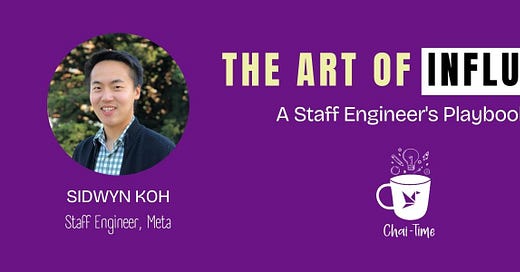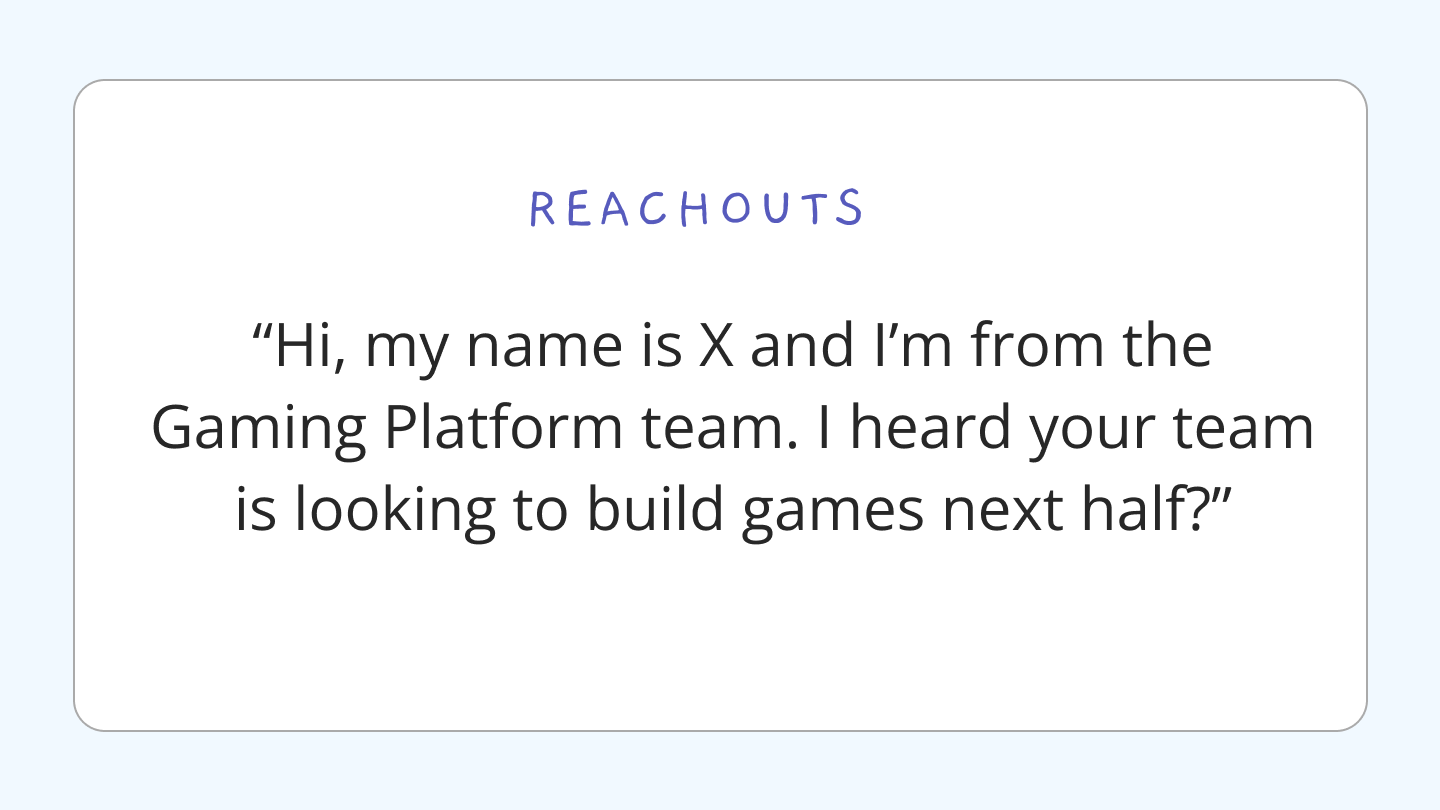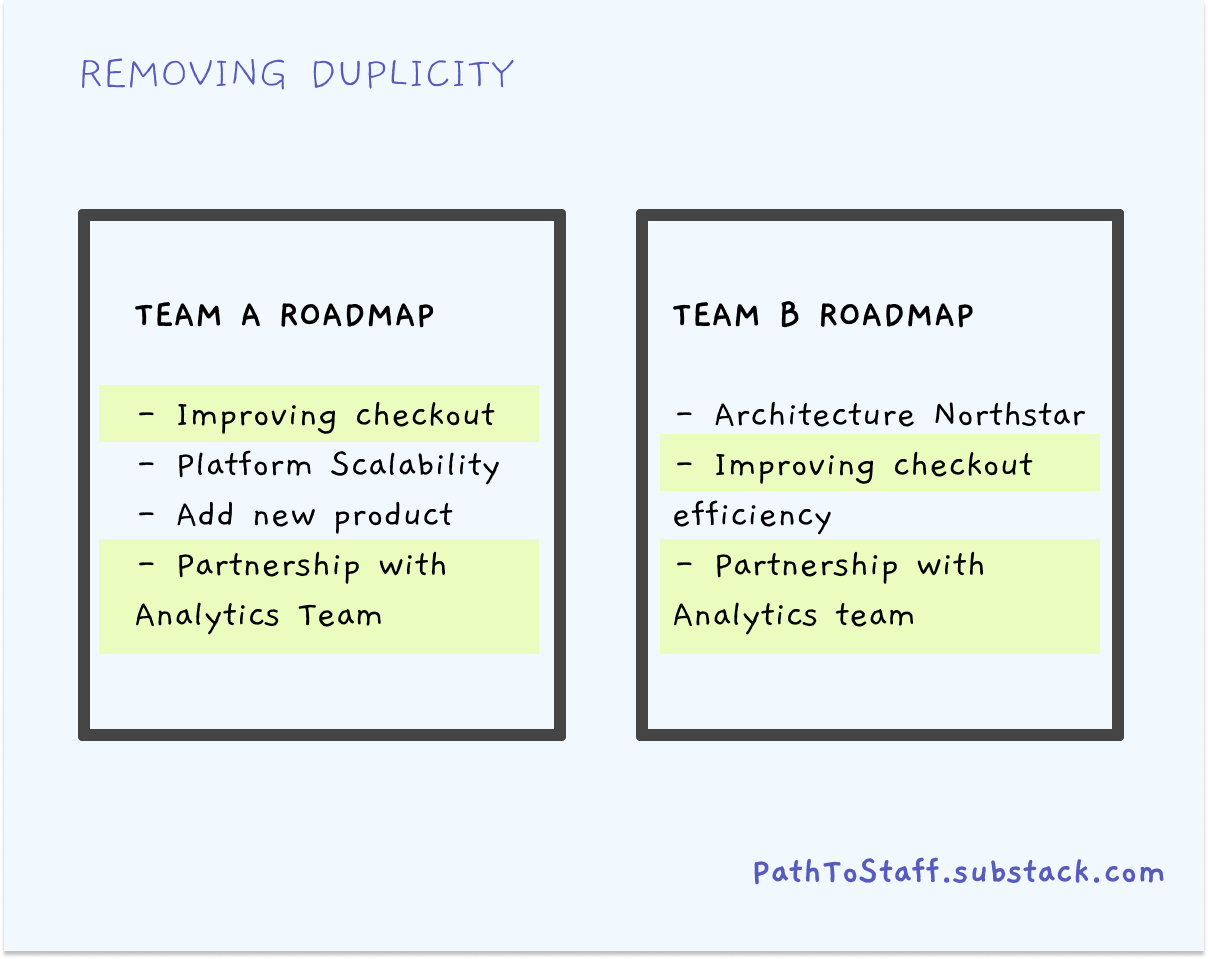The Art of Influence: A Staff Engineer's Playbook
How a staff engineer uses influence as a tool to get things done.
Hey everyone
Today ChaiTime has its first ever guest writer! from is here to talk about a skill that is valuable no matter what level/role you are in - Influencing.
Think of this article as a two-part series. Today, Sidwyn will talk about spreading influence as a Staff Engineer. I will be doing a follow-up later to talk about spreading influence as a Manager. Both are similar but slightly different. Over to Sidwyn!
As a Staff Engineer, I was tasked with improving a key reliability metric: page crash rates. But in an organization with thousands of engineers, keeping the site stable wasn’t something I could do alone. I needed to influence other teams to prioritize it. Just getting them to say, “Yeah, we know, it’s important,” wasn’t enough to drive action.
Influence — guiding decisions, shaping processes, and driving results — became essential. Much of my role now revolves around influencing teams across the organization to create impact.
Today, I’ll pull back the curtain and share how I leverage influence to achieve meaningful outcomes.
There are three key ways to spread influence:
Foster cross-org relationships
Influence roadmaps
Remove duplicity
Let's dive in.
Foster cross-org relationships
One of my secrets to influence is to build cross-organization relationships with other engineers.
These engineers are your go-to people during planning seasons, product launches, and emergencies. They keep a good pulse on the ground and can tell you if a new product is about to ramp up. They can share their organization's priorities and goals or point you to the right person.
I spend much time each half connecting with one or two staff engineers across different organizations. This means having a 1:1, messaging them async, or even sharing roadmaps.
First, you need to find the right organization to connect with. I locate those likely to be good partners with my team. For instance, if I’m representing a platform team, I’ll find product teams that can build products on top of my platform. You don’t want to force synergy between teams—you want to have some existing synergy.
Now that you’ve found these orgs, it’s time to identify the staff engineers in those orgs. In the org chart, they tend to report to directors or higher-ups. I also ask my manager for the names of key engineers or look at documents or artifacts from previous planning cycles. A last alternative to finding them is to check LinkedIn profiles to see if they have over a decade of experience. This is not the ideal way, but it is sometimes my last resort.
What do I do once I’ve found them? I first introduce myself over chat and share with them what my organization is working on. I also share my team’s goals and charter for the half, including current plans and projects. If these chats go well and you sense some sort of larger synergy building up, I usually suggest a meeting to continue the discussion.
Understanding each team’s goals and priorities is critical to these deeper discussions. We usually discuss current organizational goals and priorities and what's upcoming for both organizations. I also spend some time before these meetings thinking about potential collaboration opportunities. We'll see more about identifying these shared projects in the next section.
Influence roadmaps
Roadmaps are essential for teams and organizations. They outline the path teams plan to take over the next half or year. As a staff engineer, your fingerprints should be visible throughout this plan.
I’ve had my fair share of planning cycles in which I’ve seen staff engineers (myself included) involved with planning and those who are not as involved. Usually, teams that have their staff engineers involved in planning tend to have a much higher impact.
As you approach your planning cycle, staying in touch with these staff engineers in other orgs is essential. I usually message my connections two weeks before planning kicks off to schedule time.
Here is a Notion template of 20 questions you can use to influence planning with many stakeholders in your company!
The template is available for purchase to anyone. Just click the link below to access it!
Additionally, if you are a paid subscriber of ChaiTime, you can get this and all such templates in future for FREE! If you are already a paid subscriber, you can access the product catalog and the paid subscriber download code here!
As the ChaiTime templates library grows, the total value you get from a paid subscription will far exceed what you pay for it. Now is your chance to take advantage of the discount on ChaiTime’s annual subscription until the end of the year!
As a staff engineer, I help define the unknown and set the path forward. Once we have a project, we will take it to our managers and team and see if there is room to tackle this for the next half. Once that proceeds, with a proposal and its estimates, it can then be added to the roadmap.
Remove duplicity
Besides brainstorming ideas, as a staff engineer, you can also remove duplicity. Duplicate items across two orgs are very costly – you spend 2x the engineering effort and XFN cost.
For instance, if two teams are tackling improving checkout rates across two products, there is potential to build a joint platform and allocate twice as many engineering and XFN resources to tackle the problem. Or have one team solve it first and extend what they have learned to the other.
Here’s how I usually tackle this. With the same set of teams I found, I go through every item on their roadmap to see if my team has tackled or is tackling something identical or similar. If that’s the case, I call it out.
Let's take an example. If I'm working on improving checkout in Gaming while another team is doing the same for Marketplace, it might be time to rethink whether we need two teams addressing similar challenges.
It also doesn’t have to be duplicity for the next half/year. It can also be projects that have been accomplished before that seem to be over- or understaffed. These are all essential items that I enjoy calling out during roadmapping season.
Chaitali’s Takeaways
Thanks Sidwyn for sharing how you use influence as a staff engineer to get things done!
These were my takeaways from your article:
Relationships matter. Investing in relationships with other engineers across your company will help you at all times. This is a year-round activity that needs constant thought and effort. Don’t neglect it!
Robust roadmaps are built with information. As a staff engineer you are uniquely positioned to be the bridge between your senior management and the engineers “on the ground”. You are also uniquely positioned to be the bridge between your team and stakeholders in partner organizations. If you have built the right relationships, you can surface valuable information during planning that will lead to robust roadmaps.
Efficiency creates value. Don’t underestimate the value efficiency can create! As a staff engineer you can drive efficiency by removing duplicity and surfacing toil.
Interested in learning more? Subscribe to Sidwyn at Path To Staff Engineer, or follow him on LinkedIn.









